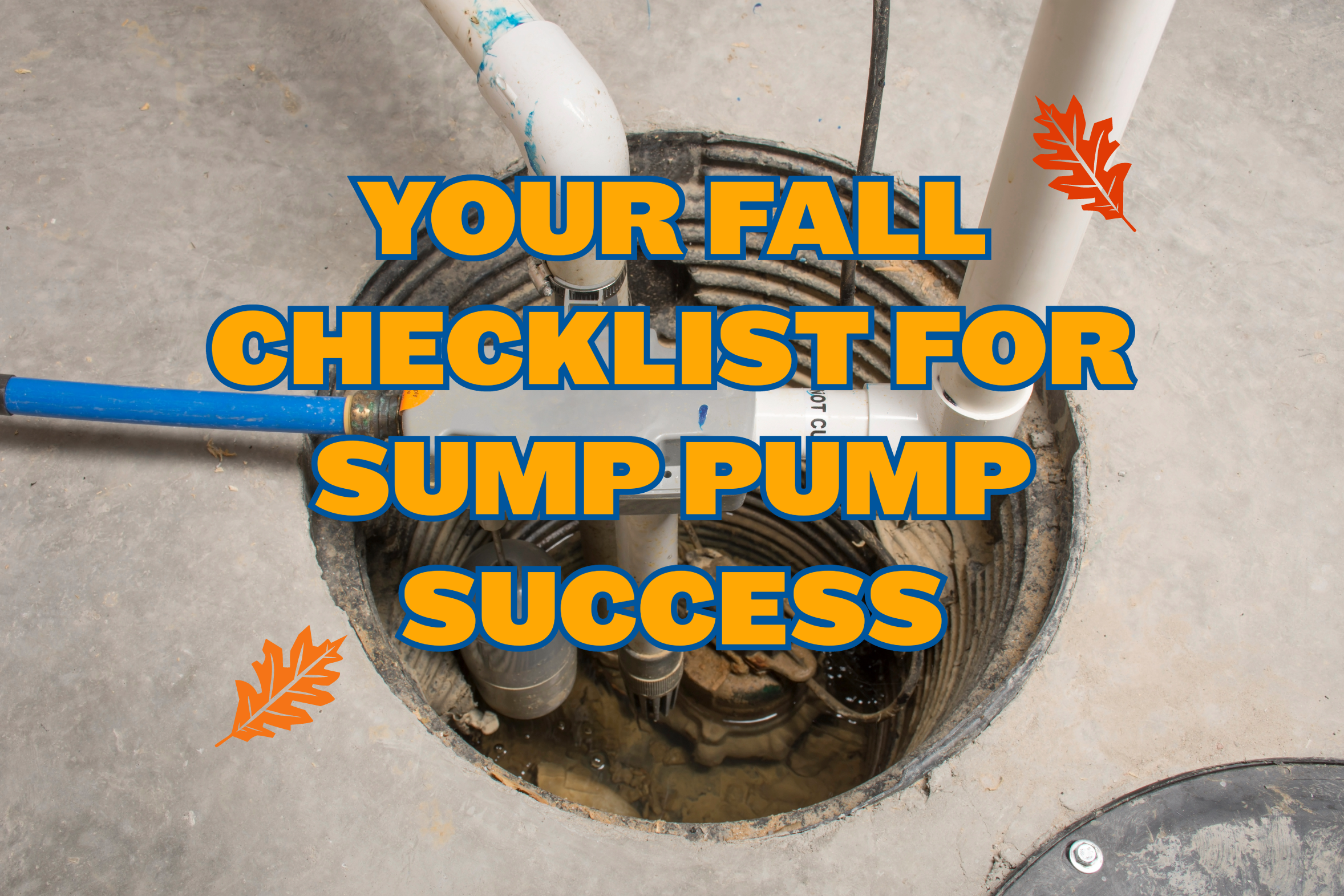Sump pumps are vital throughout the year, but they play a particularly crucial role during the fall and winter months in regions experiencing cold weather and snowfall. Therefore, it is imperative for Ohio residents to prioritize the maintenance of their sump pumps during this season. Here are a few expert tips and tricks from your professionals at Lebanon Plumbing & Drain to ensure the success of your sump pump during the upcoming colder months.
YOUR FALL CHECKLIST FOR SUMP PUMP SUCCESS:
Step 1: Inspect the Sump Pump’s Pit – Open the sump pump pit or basin by carefully taking off its cover. Once the lid is removed, inspect the interior briefly. If you encounter any debris, mud, or rocks, cautiously remove them. Foreign objects like these can cause obstructions in the sump pump, resulting in potential overflow problems.
Step 2: Inspect the Drain Hose – It is advisable to conduct a thorough examination of the drain hose too. Do this by verifying that the drain hose is firmly connected and devoid of any obstructions or ice buildup (during winter). A blocked or frozen drain hose can lead to continuous operation of your sump pump as it becomes incapable of effectively discharging the accumulated water from its pit.
Step 3: Inspect the Inlet Screen – Thoroughly examine the inlet screen to verify its unobstructed functionality, allowing for the proper entry of water into the sump pump’s pit. A blocked inlet screen can impede water access to the pit, potentially leading to basement flooding.
Step 4: Inspect the Float Mechanism – Verify the smooth operation of the float mechanism in your sump pump, as it determines the activation of the pump to remove excess water. Ensure there are no obstructions hindering the movement of the float component. A faulty float can result in the pump either failing to function when required or running continuously, potentially causing long-term damage to the pump’s engine.
Step 5: Inspect the Discharge Pipe – Please ensure that the water discharged by your sump pump is directed away from your house. When you hear your sump pump in operation, take a moment to inspect the location of the discharge pipe outside. Verify that it directs water at a safe distance from your home. If the discharge point is too close, there is a risk of water seeping back into the pump, resulting in continuous and inefficient operation. Moreover, bear in mind that excessive operation can increase the likelihood of premature wear and tear on your sump pump, which may shorten its lifespan. However, it is important to note that while it is crucial to avoid placing your discharge pipe too close to your home, outbuildings, or other structures, it is equally important to ensure that it remains within the boundaries of your property. It is essential to maintain proper drainage within your property boundaries to avoid inconvenience to your neighbors.
Step 6: Do a Test Run – Perform a preliminary test by adding a bucket of water to the sump pit to activate the pump. Carefully observe its performance to ensure effective water removal. If the pump fails to operate, ensure it is still connected to the power source and check the condition of its power cord. If the pump is still not responding, please don’t hesitate to call a professional.
Step 7: Be Prepared for the Unexpected – It is highly advantageous to have a backup battery or generator, particularly during severe rainstorms or power outages. A contingency plan provides an added level of assurance that everything will be handled in the event of a power outage or unforeseen circumstances.
To ensure optimal functionality of your sump pump during the coldest months, it is crucial to properly winterize your sump pump system in the fall. Having trouble with your sump pump? Don’t delay; call Lebanon Plumbing & Drain today at (513) 427- 2443, or schedule an appointment online now by clicking here!




